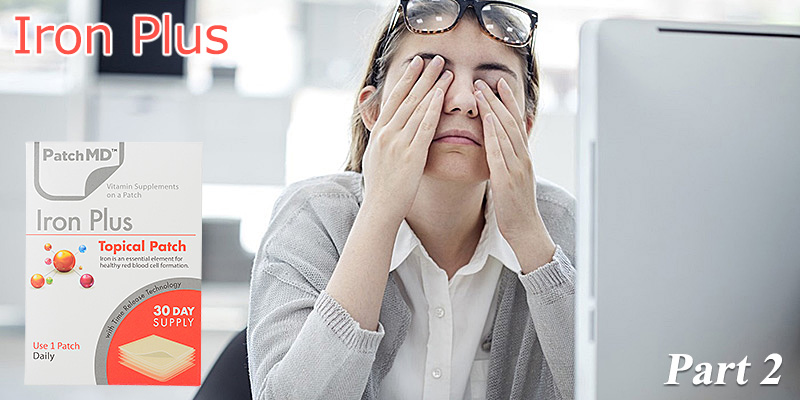About Iron – Part2
4. Shortness of Breath
Hemoglobin fuels your red blood cells and enables them to transport oxygen throughout your body. When your hemoglobin is low, oxygen levels are low as well.
When this occurs, your muscles don’t receive the oxygen they need to perform. This can affect your ability to perform daily activities, including walking.
As you try to push yourself to perform daily activities, your body needs oxygen to do its job. A lack of oxygen results in shortness of breath.
If you’re feeling short of breath performing daily tasks such as walking, working out, or climbing stairs, ask your doctor to check for iron deficiency.
5. Dry Skin and Hair
Dry skin and hair can be signs of iron deficiency. Low hemoglobin levels reduce the oxygen levels in the body. This deprives the cells that affect hair growth.
When your skin and hair are oxygen-deprived, they become dehydrated and weak. Some people with iron deficiency also experience hair loss.
Although it's normal to lose some hair each day, excessive hair loss may be a symptom of low iron levels or anemia.
If your doctor discovers you are iron deficient, you may need to eat more iron-rich foods or take an iron supplement.
There are many ways to increase your iron levels, including wearing a supplement patch.
6. Heart Palpitations
Noticeable heartbeats or heart palpitations can be a sign of anemia. If you have low levels of oxygen in your body, your heart has to work overtime to carry oxygen to your vital organs.
This can lead to heart palpitations and the feeling that your heart is pounding or beating too fast. Without medical intervention, this could lead to an enlarged heart or even heart failure.
Heart-related issues are less common than other symptoms of anemia. Heart palpitations are more common in individuals with long-term iron deficiency.

鉄分について - Part2
4. 息切れ
ヘモグロビンは、赤血球の燃料となり、全身に酸素を運ぶことができます。ヘモグロビンが少なくなると、酸素濃度も低くなります。
このような状態になると、筋肉に必要な酸素が供給されなくなります。そうなると、歩行などの日常生活にも影響が出てきます。
日常生活を送るために無理をしようとすると、体は酸素を必要とします。酸素が不足すると、息切れが起こります。
歩く、運動する、階段を上るなどの日常作業で息切れを感じる場合は、医師に鉄欠乏症の可能性を確認してもらいましょう。
5. 肌や髪の毛の乾燥
肌や髪の毛の乾燥は、鉄分不足のサインでもあります。ヘモグロビン濃度が低いと、体内の酸素濃度が低下します。これにより、髪の成長に影響を与える細胞が奪われます。
肌や髪が酸素不足になると、脱水症状を起こして弱くなります。また、鉄欠乏症の人の中には、抜け毛を経験する人もいます。
毎日、多少の抜け毛があるのは普通のことですが、過度の抜け毛は鉄分の低下や貧血の症状である可能性があります。
鉄分が不足していると医師に指摘された場合は、鉄分を多く含む食品を食べるか、鉄分のサプリメントを摂取する必要があります。鉄分を増やすには、サプリメントのパッチを貼るなど、さまざまな方法があります。
6. 動悸/息切れ
顕著な心拍数や動悸は、貧血の兆候である可能性があります。体内の酸素濃度が低いと、心臓は重要な臓器に酸素を運ぶために過剰に働かなければなりません。
そのため、動悸がしたり、心臓がドキドキしたり、鼓動が速すぎると感じることがあります。医学的な介入がなければ、心臓肥大や心不全を引き起こす可能性もあります。
心臓に関連する問題は、貧血の他の症状に比べてあまり一般的ではありません。動悸は、長期的に鉄分が不足している人に多く見られます。


